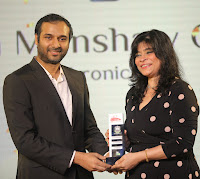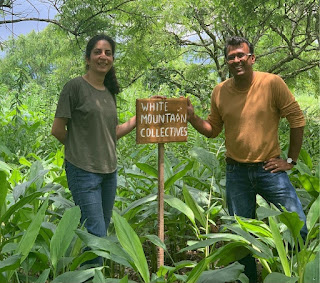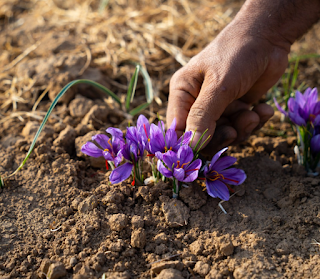Announcing the all-new edition of the very popular Culinary Chronicling Course by RushinaMG!
Have you always wanted to write or document content around food? Perhaps to record family recipes, create a food memoir, or collate the culinary culture of your community or region? Or perhaps you wish to deep dive into an aspect of food research, such as a forgotten ingredient, food history exploration, trend watching, or documenting culinary traditions. Maybe you would like to start a food-themed blog, video channel or podcast? The options are endless, but if the above resonates at any level, do read on, because this program is for you!
.jpg) Over almost two decades of my career in food, I’ve worked with food in myriad ways. From writing countless blog posts and articles, to publishing several books (mine and others), editing publications (digital and print), to doing R&D for food TV, web series, and more. I’ve also done a fair amount of food styling, food illustrations (Foodles by RMG), curated a bunch of workshops, classes, opened and shut down a business (APB Cook Studio), created brands, and worked with a gamut of individuals and brands, start-ups and large corporations. I have also created some seriously fantastic IP's (The Kellogg Flavour Conference, and the Godrej Food Trends Report to name a couple) I am very proud of.
Over almost two decades of my career in food, I’ve worked with food in myriad ways. From writing countless blog posts and articles, to publishing several books (mine and others), editing publications (digital and print), to doing R&D for food TV, web series, and more. I’ve also done a fair amount of food styling, food illustrations (Foodles by RMG), curated a bunch of workshops, classes, opened and shut down a business (APB Cook Studio), created brands, and worked with a gamut of individuals and brands, start-ups and large corporations. I have also created some seriously fantastic IP's (The Kellogg Flavour Conference, and the Godrej Food Trends Report to name a couple) I am very proud of.
 |
| Recognised for Chronicling at the IFBA awards by FBAI. |
The pandemic threw a spanner in the works, but it also forced me to pivot with the concept of Chronicling. With food becoming prime focus during the time I observed a groundswell of interest in documenting all things culinary, while formats and consumption patterns were also rapidly evolving. And I was inspired to create, formalise and conduct the first round of ‘Culinary Chronicling with RushinaMG,’ a course in which I distilled almost 20 years of experience in creating food content across varied verticals into a program designed to equip culinary content creators with the foundation to be able to create well-crafted content with agility across mediums and platforms.
In the wake of the pandemic, mediums, formats and platforms for food content continue to evolve and we must evolve to stay abreast. Keeping all of this in mind I am happy to share that this year The Culinary Chronicling Course with MG is bigger and better than ever!
What is Culinary Chronicling and who are Culinary Chroniclers?
 |
| All stars at the first Culinary Chroniclers Conclave |
Why you should sign up.
If you want to research and document food and cuisine in order to create high-quality food content, this course is for you. Your content or chronicles can manifest as a blog, articles, books, podcasts, videos, and more. Learn how to conceptualize, organize, research, document, and present your chronicling project with keen attention to your target audience and your voice as a chronicler.
Details On The Course
The 2022 course is bigger, wider, deeper, and better! Efficiently structured into an accelerated 6-week online format, it packs in more into 16 sessions (over 35 hours) of rich curriculum-based lectures and interactions, than ever before. And is designed to equip aspiring Culinary Chroniclers with the knowledge, skills, tools, and thought processes they would need to create well-crafted, high-quality food content for varied mediums (written, illustrated, audio and visual) and formats (online, print, audio, video and social media). This year the course includes all new modules on the basics of creating content for food styling, photography, podcasting, and video. Through the course participants will explore the genre of Culinary Chronicling, learn the nuances of content creation and navigating different mediums, information visualization, project management, building their individual brand, showcasing their work on varied media platforms, and more.
An Overview Of The Curriculum
In addition to bi-weekly lectures by accomplished experts in the Culinary Chronicling space, the course is packed with topics that will excite thinking through mind-mapping and other exercises, lots of reading, stimulating conversations and a regular cycle of assignments and reviews.
An Introduction to Culinary Chronicling
The Journey and Structure of Chronicles
Developing Ideas and Concepts
Nuances of Culinary Research and Documentation
Food Writing, Recipe Documentation and Development
Information Visualization and Supporting Content
Food Illustration and comics
Food styling and Photography
Creating Your Brand and Developing Your Proposition
Pitching and Publishing
Introduction to content creation for Podcasting and Video
A detailed curriculum will be shared on confirmation of acceptance.
Instructors and Expert Guests
While the course is created by me and I lead many of the sessions, I believe that learning from experts who have successfully built careers in specific verticals is invaluable for aspiring Culinary Chroniclers. With this in mind, the course also incorporates lectures and interactive sessions with experts from different streams of chronicling who will impart knowledge, skills, and, insights from their own rich experiences. Our guest Instructors this year include (From Top Left)
- Shivani Unakar, Independent Researcher and Writer will conduct a session on Developing Ideas and Concepts - Dr. Mohsina Mukadam, Culinary Historian, will conduct a session on Nuances of Culinary Research. - Ruth Dsouza Prabhu, Independent Journalist and Food Writer - will conduct a workshop on Technical Writing on Food. - Abhijeet Kini, Illustrator, animator, award winning indie comics creator - Will conduct a session on How to Create a Food Comic. - Alok Verma, Food Stylist and Photographer - will conduct a session on basics of Food Styling and Photography. - Roxanne Bamboat aka The Tiny Taster, Blogger, Podcaster (Beyond Butter Chicken) - will conduct a workshop on An Introduction to Creating Content for Podcasts - Nehal Karkera, Former Chef & Food Content Creator - An Introduction to Creating Content for Video. Chandra Shekhar Ghildiyal, Chief Product Designer, Tata Class Edge wil conduct a session on Information Visualisation and Supporting Content. Rushina MG, Curator will conduct sessions on; The Journey and Structure of Chronicles, Research and Documentation, Recipe Documentation and Development, Introduction to Food Illustration, Creating your Brand, Developing your proposition.Application and Registration Process
We believe that Culinary Chroniclers are individuals with a passion to discover and document food, cuisine, and culinary traditions. However they must also meet a certain criterion of mindset, writing, listening and observational skills, and interest for everyone to benefit from the course. To this goal, this year we have introduced a 2 step process of application and registration.
Aspiring applicants would be required to fill out an application form so my team and I can assess if they fit the criteria. On acceptance, you will be intimated with further details on registration and payment.
Form Link - If you feel you want to explore being a Culinary Chronicler, then please fill this form
Essential Information
Dates - 20 August - 08 October 2022 Due to many requests we have rescheduled to start after Ganesh Chaturthi. The final start date is 03 Sep to 6 Oct with the finale session in mid Oct.
Format and Scheduling - Online (16 Sessions - Regular sessions will take place twice-weekly, on Tuesdays and Thursdays. Expert sessions will take place on weekends). The final schedule with dates will be shared with participants accepted into course, in advance of commencement.
Batches - We have a batch size of 10 (minimum) - 25 (maximum) participants per batch. There will be two batches to pick from. While all session recordings will be shared throughout the duration, it will be important for participants to keep pace with the course and complete assignments and submissions in a timely manner and I would like to emphasize that attendance is compulsory for optimal performance.
- Morning [10:30-12:30 IST]
- Evening [6:30-8:30 IST]
Course Fee - Rs.15000 (payable in advance on acceptance)
Tools and Resources: Participants of the course get access to:
Recommended reading lists
Templates and Guides
Skill-building tools
Access to a repository of conversations with chroniclers
Certificate of Participation and Culinary Chroniclers Badge on completion
Note: Further details on the course, the final schedule and payment process will be shared with participants accepted into the course via Whatsapp and email. For any doubts or questions please write to bookings@apbcookstudio.com.
.jpg)

















